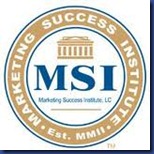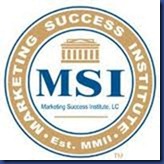 Part 5 in our 8-part examination of Bryan Pope’s The 7 Pillars of Successful Marketing
Part 5 in our 8-part examination of Bryan Pope’s The 7 Pillars of Successful Marketing
The 5th Pillar of Bryan Pope’s 7 Pillars describes the two key elements of a marketing campaign (pillar 4): methods and vehicles. I quote Bryan himself (with his permission) from his download and PDF An Introduction to the 7 Pillars of Successful Marketing. I strongly urge you to buy them for yourself, study each of the 7 pillars, and implement them.
Overview for Pillar 5
“If you’ve done your marketing right up to this point, you’ve done your research to
find out what your market is really looking for and what they are willing to pay for it.
You’ve developed a message and image that say to your audience, “Hey! This is where
you can get what you’re looking for!” You’ve created at least one, and perhaps multiple,
strategies that clearly state your goals and big picture plan for taking that message to your
target audience. Then you’ve looked at when to get that message out, whether that’s in
short bursts at optimum times, or ongoing for a period of time. You’ve also established
specific campaign budgets and identified the resources you’ll need to make those
campaigns happen.
If you’ve done all that—and only if you’ve done all that—are you ready to start
looking at tactics or, in my terms, methods and vehicles.”
3 Marketing Methods
“When I say “marketing methods,” I’m talking about just three things: promotion,
publicity/PR, and advertising.
- Promotions are marketing activities designed to get the cash register ringing with a specific offer, a strong call to action, and a deadline. Those three elements create promotions.
- Publicity and public relations are largely the exposure your company gains for free. This marketing method includes such things as distribution of press releases, public speaking opportunities, stories in publications about your company, product, or service, and so on.
- Advertising is the one method with which we’re all quite familiar. From
traditional media such as radio, newspaper, magazine, and television advertising, to
billboards, to new media advertising on the internet, through texting, and so on,
advertising is perhaps the best understood marketing method.”
Marketing Vehicles
“Now that you know what the three methods of marketing are, let’s look at some of the
vehicles that fall under those methods. This should be real eye-opener for many people
since these are the very things they think of when someone says “marketing.” Yes, these
are extremely important elements of marketing, but they, on their own, are NOT
marketing! …
You must follow The 7 Pillars completely and in proper order to gain the synergies, power, and success that are waiting for you as an enlightened marketer.
Here is a short list of some of the marketing vehicles you may use in your marketing
efforts as appropriate based on your market research, messages, strategies, campaigns,
and methods:
- referral programs
- frequent buyer clubs
- rewards programs
- contests, sweepstakes and drawings
- cross-promotions
- discount programs
- coupons
- gifts and premiums
- in-store events
- educational programs and seminars
- newspaper ads
- signage
- word-of-mouth
- direct mail
- telemarketing
- bounce-back offers
- press releases
- community volunteerism
- company newsletters
- internet advertising
- blogging
- podcasting
- networking events
- banners
- joint mailings
- sponsorships
- point-of-purchase displays
- trade shows
…and the list goes on and on.
These, and many other vehicles, deliver your message and facilitate action on the part
of your audience. ”
Questions to Help You with Methods or Vehicles
- Which marketing vehicles can I use under the Publicity/Public Relations method to get my message to my target audience?
- Which marketing vehicles can I use under the Promotion method to get my message to my target audience?
- Which marketing vehicles can I use under the Advertising method to get my message
to my target audience?
(Remember, especially with advertising, to consider the budget you’ve established.)
“Until you’ve found some answers through addressing the first four critical areas of marketing
as represented by the first four pillars, you’re robbing yourself of every opportunity to
make your marketing as potent as it can possibly be. You’re going to spend the time and
money getting your message out there anyway. Why not do it right?'”
Read the blog on Thursday when we assess pillar 6: Sales systems













